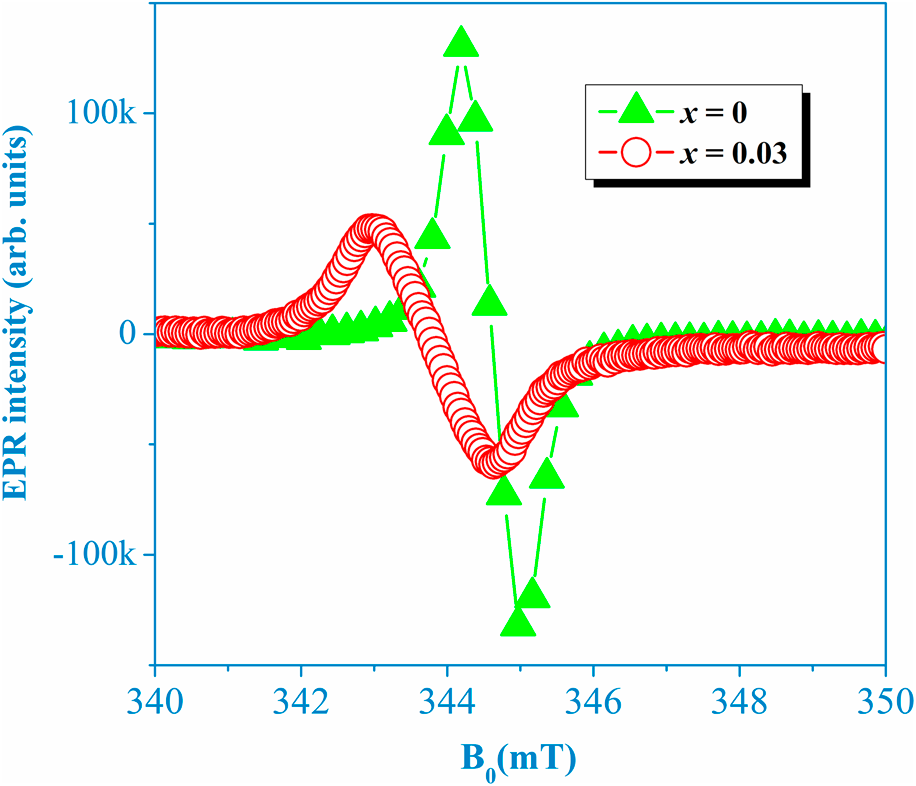Article contents
Effect of Al3+/Si4+ codoping on the structural, optoelectronic and UV sensing properties of ZnO
Published online by Cambridge University Press: 15 May 2020
Abstract

The structural, vibrational, and optoelectronic properties of sol–gel synthesized Zn1−x(Al0.5Si0.5)xO nanoparticles were investigated. The X-ray diffraction studies of the samples confirmed the hexagonal wurtzite phase with the space group P63mc. No significant changes were observed in the lattice parameters. The increase in the intensity of  $E_{{\rm{high}}}^2$ Raman mode observed at 438 cm−1 indicates a decrease in the crystallite size. The reduction in the deep-level emission band with the introduction of Al/Si indicates a decrease in intrinsic defects for the codoped sample. A unique electron paramagnetic resonance signal at g= 1.96 follows the same trend as the green luminescence, and its evolution was shown to probe the oxygen vacancy concentrations. I–V characteristics curve confirm the increase in the conductivity for the codoped samples. To evaluate the role of surface defects, ultraviolet photoresponse behavior as a function of time was also studied, and an increase in the photocurrent was observed. The slow decay and rise in the photocurrent are because of multiple trapping by interstitial defects. A relatively faster response time was observed with the substitution of Al/Si. It has been observed that prepared nanomaterials are suitable for optoelectronic devices.
$E_{{\rm{high}}}^2$ Raman mode observed at 438 cm−1 indicates a decrease in the crystallite size. The reduction in the deep-level emission band with the introduction of Al/Si indicates a decrease in intrinsic defects for the codoped sample. A unique electron paramagnetic resonance signal at g= 1.96 follows the same trend as the green luminescence, and its evolution was shown to probe the oxygen vacancy concentrations. I–V characteristics curve confirm the increase in the conductivity for the codoped samples. To evaluate the role of surface defects, ultraviolet photoresponse behavior as a function of time was also studied, and an increase in the photocurrent was observed. The slow decay and rise in the photocurrent are because of multiple trapping by interstitial defects. A relatively faster response time was observed with the substitution of Al/Si. It has been observed that prepared nanomaterials are suitable for optoelectronic devices.
Information
- Type
- Article
- Information
- Copyright
- Copyright © Materials Research Society 2020
References
- 3
- Cited by

